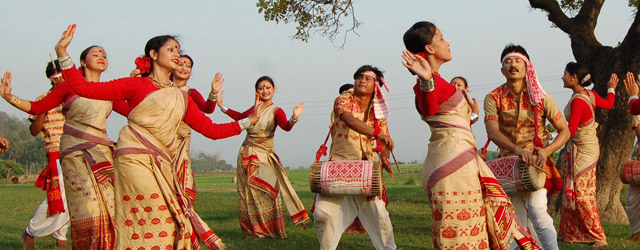The culture of Assam is predominately agrarian in nature and the main livelihood is dependent on agriculture. Owing to this single most important fact, the New Year as per the Assamese calendar coincides with the beginning of the harvest season, which is also known as Bohag Bihu.
The first day of the Bohag New Year usually falls on the last day of the Assamese month of ‘Chait’. On the occasion of New Year people celebrate by wearing new clothes and preparing different Assamese delicacies like ‘Pitha’ and laddoos. Various groups of young boys and girls perform Bihu dance and the best female performer is awarded the title of ‘Bihu Kuwari”.
In ancient days, the festivities used to continue for a month, however now it is limited to just seven days nowadays. During these seven days, Assamese people clean their houses and wash their cattle and offer them with good food as a token of thanks for helping them in the farmland. Cattle is allowed to roam freely for a single day and then their ropes are changed and they are worshipped with traditional prayers and garlands. On the second day of celebration, people concentrate more of themselves and a special prayer service is held in the Namghar or in the prayer hall for the wellbeing of the entire community.
The women in the house prepare special dishes on the occasion of New Year from flattened rice, jiggery and curd. During the period of celebration, Assamese people usually wear only traditional clothes. The traditional clothes for women during Bihu are Mekhala, while that of the boys comprises of dhoti and gamcha.
On the occasion of Assamese New Year, various dance festivals are held and fairs are organised throughout the state and most of the educational institutes and offices remain closed for the period of three days.









